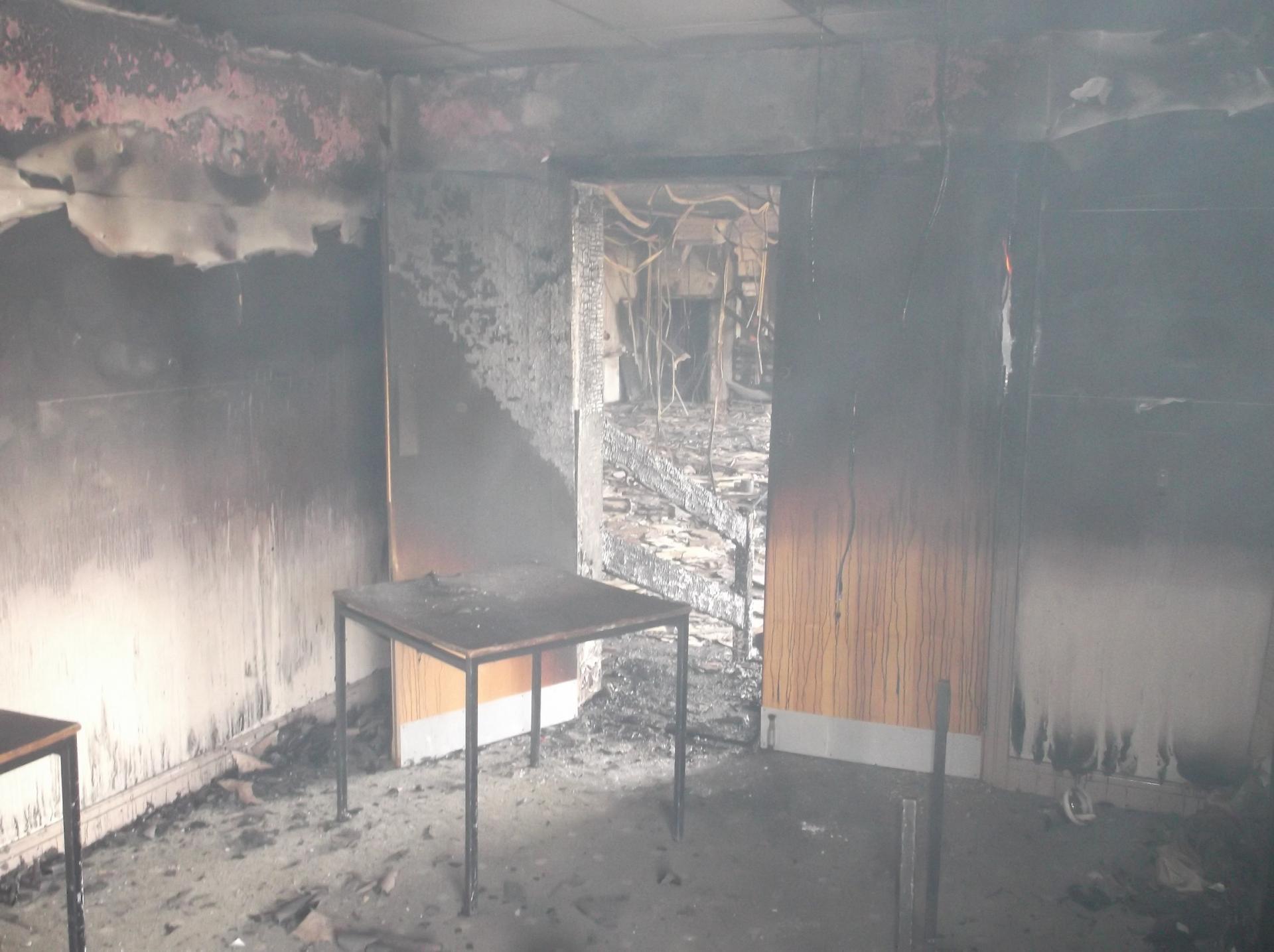
FCN has been working on behalf of policing and fire and rescue services to help organisations embed quality processes and prepare for accreditation. Last year, a national approach to fire investigation accreditation readiness saved £2m compared to organisations conducting the activities separately.
FCN’s fire investigation lead Dai Hancock, who previously spent 29 years operationally in Mid & West Fire and Rescue Service, explains:
“The responsibility of fire investigation for the purposes of the criminal justice system ultimately lies with policing. It’s the same as any other crime scene and evidence produced for a criminal case. In a sense, fire and rescue services act as a supplier to policing when they provide scene assessments and evidence. It makes sense for us to develop and share a common approach, rather than organisations acting in isolation and duplicating their efforts.”
A coordinated approach has been well-received by the community. At the Thames Valley Forensic Fire Scene Investigation Unit, station manager and technical manager Pete Mackay explained:
“The Thames Valley FFSIU collaboration has benefitted considerably from the support and guidance provided by the FCN, in what is a very challenging time as we have moved forward in our accreditation journey.
“As an entirely new area for Fire & Rescue Services, the sharing of information, access to workstreams and the wider contacts has enabled us to learn, share information and also work to ensure we understand the stringent requirements. Accessing the FCN information and having regular update meetings which provide both direction and challenge has been invaluable. Being able to also utilise the competency assessment materials and be involved has widened our knowledge significantly.
“The key areas of time and finance are significant areas of concern for any FRS and using the FCN to help provide guidance helps us to mitigate the risk as far as possible.”
Also last year, FCN introduced a new streamlined forensic reporting (SFR) process for deliberate fires on behalf of the National Fire Chiefs’ Council fire investigation lead Chris Blacksell. This means police forces receive streamlined paperwork from the crime scene, saving investigators’ time and making evidence easier for juries to understand.
More recently, rather than every fire and rescue service embarking on their quality journey separately, FCN has helped by running a four-stage competency assessment for investigators in each participating service. This has saved resources, money and time for services.
Each assessment takes about three hours overall and comprises: completion of a technical knowledge paper, a virtual reality (VR) scene inspection assessment, a physical assessment for either anti-contamination or photography, and a professional discussion and feedback session.
FCN Fire Investigation specialists have directly assessed 58 practitioners, with a selection of these 58 participants then trained to assess other people in their organisation – meaning a total of 145 people have now undertaken these competency assessments.
Controlled burns
This summer, FCN also ran a physical validation exercise in which 51 fire investigators from 21 fire services and 20 CSIs from five police forces including the Metropolitan Police, South West Forensics, Thames Valley Police, Beds, Cambs and Herts Forensic Collaboration, and Dyfed-Powys Police were put through various hypothetical scenarios.
Between the competency assessments (which promote consistency between fire investigators of different experiences and backgrounds) and the validation exercises (which test the reliability and repeatability of investigating different scenarios) FCN has produced and ‘stress tested’ a standard operating procedure for Tier 2 fire investigation.
In theory, any competent investigator using the FCN procedure should be able to identify the causes of a fire crime scene regardless of the scenario.
The controlled burn sites which FCN commissioned for its validation exercise have also benefitted other projects and organisations. A fingerprint expert from the Metropolitan Police tested the ability to recover fingerprints on various burnt items. Thermal testing was also conducted during the burns which showed the fires reached up to 960 degrees Celsius. The team was also able to capture 360° photography of the site before and after the burn, to conduct more assessments.
What next?
FCN is continuing to explore further ways to support Fire Investigation activity to be compliant with the Forensic Science Regulator’s Code in readiness for future requirements.
This includes publishing compliant framework for the quality manual, standard operating procedures and guidance notes as well as completing next phase competency assessments and validation exercises.
It might also include delivering inter-laboratory comparisons (ILCs) nationally on behalf of fire and police services. This will see multiple services provided with fire scenarios to respond to, testing the consistency of response and allow learning opportunities for investigators. Regulatory codes and quality standards require proficiency testing or ILC to be conducted, but as there are no accredited providers of proficiency testing for fire investigation, it may be an area the community and key stakeholders want FCN to lead.
FCN is also looking into the feasibility of a national validation exercise for photo ionisation detection (PID) on behalf of fire and police services.
For more on FCN’s accreditation work for CSI, digital forensics and sexual assault referral centres (SARCs) visit our quality pages.
To contact Dai just email David.hancock@transformingforensics.police.uk